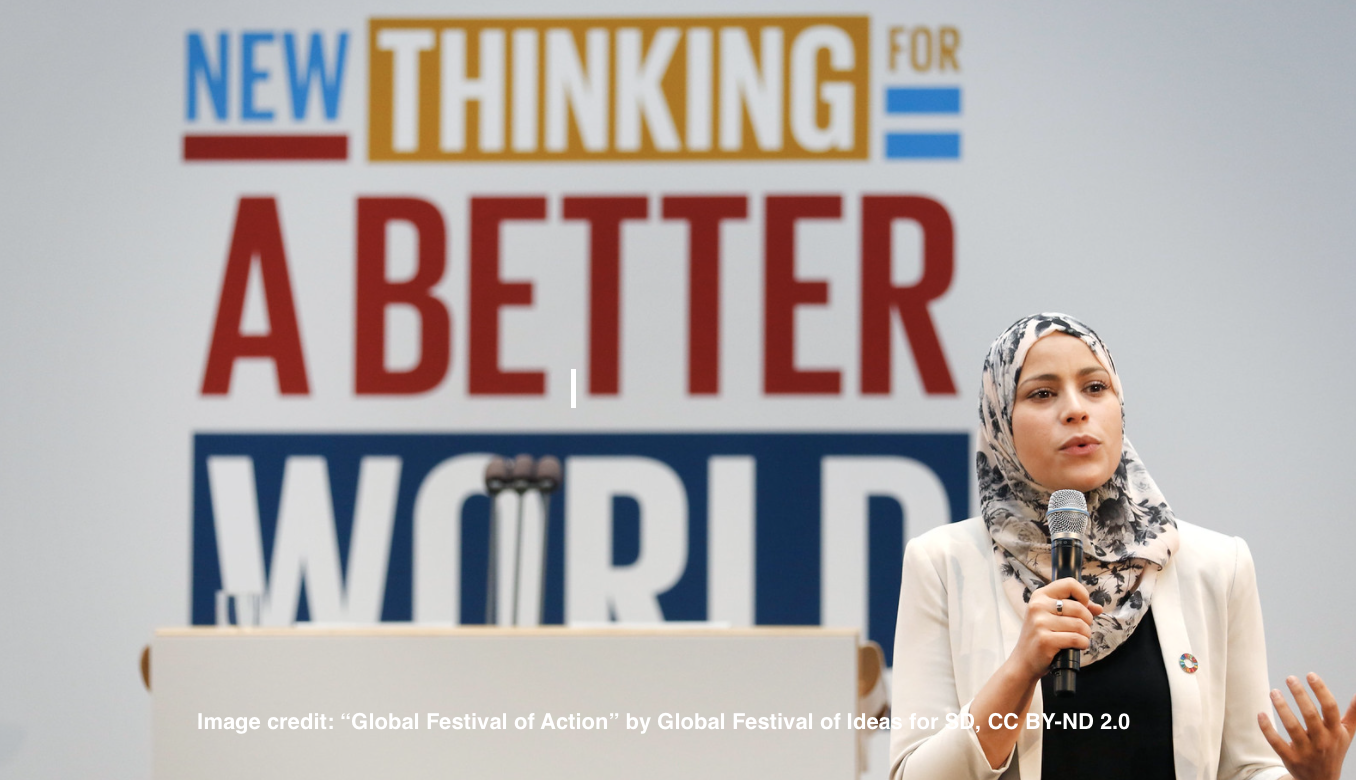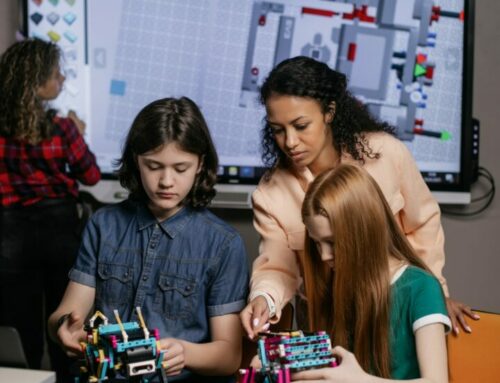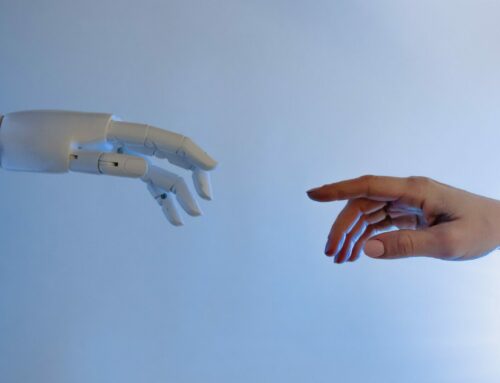Rethinking Higher Education for the Future
Patrick Blessinger
Over the past several decades, the democratization of knowledge has spread rapidly around the world as a result of political, economic, social, technological, and environmental forces. These forces have helped global higher education experience unprecedented growth in student enrollment and institutional diversification. Global higher education enrollment is expected to reach nearly 600 million by 2040. In the future, certain countries in Africa and Asia are expected to experience the largest increases in participation rates. What was once an elite higher education system just a few generations ago has quickly emerged into a massified higher education system. Today, in some parts of the world, higher education has even reached universal access.
Not only are there now many types of degree-producing formal learning options available to people but there are also many types of open education and non-formal learning options such as OpenCourseWare and Khan Academy. Higher education around the world now consists of a highly diverse system of educational institutions and learning platforms. In addition, there now exists an amazing variety of educational missions, business models, and provisioning methods as institutions strive to differentiate themselves in a highly competitive educational landscape.
As such, there is no longer a single model of higher education or a single model of learning. Rather, higher education has evolved into a highly diverse learning ecosystem with a highly varied educational landscape. Today’s higher education system is chiefly characterized by expansion, change, and adaptation. As the production and consumption of knowledge have exploded with the help of new global communication technologies and publishing platforms, the information society has given way to a global knowledge society. In today’s educational environment, change has become constant.
The nature of change
In a highly globalized world, for better or worse, change can occur very rapidly. Change can come in many forms. Whether it be political change, economic change, social change, or technological change, the rate and magnitude of change can leave a huge impact on the world.
As the world becomes increasingly interconnected, what happens in one part of the world can, and often does, have a quick and significant impact on other parts of the world. As such, higher education now operates in a hyper-connected and interdependent world.
Social change is a continual process marked by varying degrees of change over time. Broadly defined, social change occurs when some event alters the social order in some significant way. Change may be evolutionary such as those micro changes brought about by normal day-to-day activities, or the change may be revolutionary such as those macro alterations brought about by transformative and wide-scale disruptions to the status quo. Higher education has also been a catalyst for change.
Evolutionary changes occur as a normal part of political, economic, and social interactions, and it is through these interactions that gradual development and progress tend to occur. With evolutionary changes, the status quo, by and large, is maintained. In a revolution, on the other hand, the basic nature of political, economic, and social institutions and relationships are fundamentally altered. Change can therefore be viewed as operating along a continuum.
With revolutionary changes, a paradigm shift occurs, where either a whole new system replaces the current system or where the current system is significantly altered in a fundamental way. For example, in recent history (for example, the 1990s), the world has seen an end to the Cold War, an end to apartheid in South Africa, and the collapse of the Soviet Union and other communist regimes in eastern Europe. Moreover, the world has seen the explosion of the internet through the development of the World Wide Web as well as the development of the human genome, wireless technologies, cloning, and GPS, among many other revolutionary discoveries and inventions.
Change may bring with it either positive or negative results depending on the factors driving the change and depending on the outcomes of the change. Thus, in democratic societies, rights (human, animal, and environmental) are codified and instituted in the form of humane laws, rules, policies, and social norms in order to safeguard the different elements of society against any potential negative effects of those changes. Thus, education as a right, for example, can be viewed as a social and economic equalizer for many.
The need for change
Social change is needed because social progress is needed, and social progress is needed because social reform is needed. Throughout human history, structural and institutional reforms were needed in order to address inhumane practices and conditions such as tyranny, genocide, slavery, servitude, persecution, and other human rights violations. These conditions, in turn, derive from destructive beliefs and irrational attitudes such as racism, sexism, elitism, supremacism, and other forms of prejudice, exclusion, and intolerance.
Without needed reforms, the quality of life in society and the sustainability of the planet would remain stagnant or even harmful. In such cases, evolutionary changes are not always sufficient to overcome deeply embedded and long-standing practices based on corruption, exploitation, and oppression. In such cases, revolutionary change is needed.
In addition, without an appreciation of human rights, one is less likely to have an appreciation for animal rights, and without an appreciation for animal rights, one is less likely to have an appreciation for environmental rights. This interrelationship of rights is plausible because humans, animals, and the environment are inseparable and inextricably linked to survival. Thus, the different types of rights are interconnected and interdependent.
Sites such as Human Progress and Our World in Data provide ways to measure political, economic, and social progress. These sites provide empirical data to measure progress made on global problems such as poverty, hunger, literacy, and education. In addition, sites such as the Social Progress Imperative use data to measure how well different nations meet the needs of their citizens. To that end, higher education plays a key role in creating a sustainable future.
The changing landscape of higher education
The increasing global demand for higher education is, in part, a result in changes in the labor market (for example, an increased premium on advanced knowledge/skills and lifelong learning), increased urbanization (for example, people moving to large cities in search of career opportunities and social mobility), changing student demographics (for example, nontraditional and part-time students), and changing learner needs (for example, humanistic education, personalized learning, career preparation).
As a result of these changes and in order to open access to higher education for all, institutional diversification has increased (new types of educational institutions), new educational offerings have increased (for example, non-formal learning, open education), and more flexible provisioning methods have increased (for example, online and hybrid learning). Thus, higher education is changing to address the new literacies needed for the twenty-first century.
Based on the emerging global trends, The Georgia Institute of Technology has identified five drivers of change that will affect higher education in the coming decades: changing demographic trends, changing socioeconomic forces, changing learning needs of students, advances in the science of teaching and learning, and institutional development for continual innovation. These findings can provide insight for other higher education institutions.
These trends exemplify the growing democratization of higher education, and they put more pressure on higher education institutions to place greater focus on the following areas: diversity, equity and inclusion, high quality and meaningful education, affordable and flexible lifelong learning, and integrating rights and sustainable development into the educational process.
Wide-scale and long-lasting social change is often triggered by major political, economic, social, technological, and environmental factors. The greater the interconnectedness between systems (for example, information and communication systems, financial and commercial transactions, travel and transportation systems, scientific discoveries, and technological development), the faster that change will be diffused across those systems.
With respect to the quality of life on the planet, the results of change can be positive or negative, or slow or fast. For example, before the Industrial Revolution, gross domestic product (GDP) per capita remained largely flat (unchanged) throughout human history. Between the years of the Industrial Revolution and World War II (WWII), GDP around the world increased gradually, but at the expense of mass industrialization (for example, pollution, environmental degradation, deplorable working conditions, child labor) and due to such factors as mass urbanization and fossil fuel use.
Change and uncertainty
But it was not until after WWII, however, that the per capita GDP and total economic output of the world began to soar. WWII became a major catalyst for change. Because of the extreme nature and global impact of WWII, world leaders were compelled to come together after the war to agree on and implement several important developments in human history (for example, universal declaration of human rights and intergovernmental organizations like the United Nations, the World Bank, and the World Health Organization). Also, the victory of freedom over totalitarianism spurred the development of many more democracies around the world.
Furthermore, substantial improvements in the overall quality of life are a relatively recent phenomenon relative to the total span of human history. As recent as a hundred years ago, most of the things we take for granted today, such as medicine, refrigeration, sanitation, and universal education, were not available to most people around the world, and things such as computer technology, the internet, and mobile phones, among others, were only imagined. As a result, the speed of change has also increased as new developments leverage off previous developments in a virtuous cycle.
As the world becomes more globalized, the world becomes increasingly characterized by interconnectedness, interdependence, complexity, uncertainty, and risk. Greater interconnectedness leads to greater interdependence which leads to greater complexity (of political, economic, social, technological, and environmental systems) which leads to greater uncertainty which leads to greater risk. As a result, for better or worse, the modern era is chiefly characterized by increasing complexity, uncertainty, and risk.
Thus, risk management has become one of the most important aspects of modern life at all levels. Insurance, for instance, is a type of risk management that is used as a hedge against uncertain future events. Thus, higher education (and more broadly, lifelong learning) can also be viewed as a type of insurance to help protect students and society against uncertain future outcomes. This is one reason why having a diversely educated citizenry is paramount to the proper functioning of a democracy. Education should therefore equip students with the knowledge and skills they need to prepare them for an uncertain future.
Social development
Since the development of organized human communities thousands of years ago, societies have gradually evolved in many ways. One of the main reasons why humans began to gather into shared communities was because they recognized the advantages of doing so. Communities require humans to establish governments for the proper administration of the community, and this inevitably leads to the creation of laws, rules, and social norms to guide human behavior.
As communities become larger and more diverse, they tend to require more complex governing structures. In the course of their development, societies tend to reach a stage where relatively simple top-down autocratic governance becomes less effective and less efficient. It is perhaps no surprise, therefore, that the Industrial Revolution and the Democratic Revolution occurred during the same timeframe. Thus, over time, in the natural social evolution of societies, autocracy tends to give way to more democratic forms of society, depending on the specific cultural-historical context of the particular society.
Since the Industrial and Democratic Revolutions of the eighteenth century, societies have become increasingly complex, characterized by an increasingly educated citizenry, increased specialization of labor and knowledge, as well as increased trade, communication, and travel, among other characteristics. These characteristics tend to create mutually reinforcing and intertwined systems.
However, social evolution, as with natural evolution, does not absolutely guarantee that humanity will inevitably lead towards a utopia or even towards a better future. Mass extinctions of species have occurred throughout the life of the planet for different reasons. Today as well, the planet is confronted with several potential global disasters and crises that are either man-made (for example, irreversible climate change, mass species extinctions, risk of nuclear annihilation) or naturally occurring (for example, volcanic eruptions, asteroid impacts, hurricanes, tsunamis, and wildfires).
Towards a brighter future for all
It is no surprise that the data on world economic output correlates positively with the development and growth of democracy, rights, and, more recently, sustainability. However, the price for this progress is increasing complexity, uncertainty, and risk. Thus, human understanding of the world and human decision-making has become increasingly probabilistic. As quantum physics has revealed, the world is a quantum world – humans, therefore, live, by and large, in a probabilistic world characterized by uncertainty and fluidity.
The increasing risk of climate change and nuclear annihilation, for instance, could wipe out many of the gains that humanity has achieved. Many parts of the world are still plagued by disease, pollution, poverty, illiteracy, and tyranny. In spite of the huge advances that humanity has achieved over the centuries, humanity still remains vulnerable to the self-destructive tendencies of human nature: violence, tyranny, domination, predation, and hate, among others.
Certain human beliefs, attitudes, and mindsets drive certain human behaviors and thus still constrain human progress. Whether the world continues on the road of progress will ultimately depend on humanity’s ability to unite and cooperate on the most serious and life-threatening issues of our time: pandemics, refugee crisis, climate change, and nuclear proliferation, among others. Within this context, higher education, as a vehicle for social progress and knowledge production and consumption, can help lead the world to a more sustainable future. One of the major challenges then is how to make higher education accessible and inclusive to all while at the same time making it affordable and relevant.
In order to adequately prepare students for a world characterized by change, disruption, and uncertainty, higher education must develop students’ capacity for continual knowledge consumption and production (i.e., lifelong and lifewide learning), critical, creative, and transferable thinking skills, as well as attitudes and habits that effectively allow one to function effectively in highly complex and chaotic environments filled with uncertainty and risk. These learning outcomes have huge implications for teaching, curricula, research, and service.
Achieving these outcomes will not be easy as they will likely put pressure on educational institutions to move towards, among other movements, more cross-disciplinary and inter-disciplinary teaching and learning that focuses on cross-cutting themes, systems thinking, as well as adaptive problem-solving and research.
Therefore, higher education should be more responsive to the needs of the community it serves and to the world in which it operates. Higher education leaders should lead with a more inclusive vision and a mindset of innovation and adaptability. Higher education should be an incubator for lifelong learning and a vehicle for service to humanity.
Patrick Blessinger, Adjunct Associate Professor, St. John’s University, USA; Executive Director, HETL Association, USA.
Suggested Citation:
Blessinger, P. (2022). Rethinking higher education for the future, Higher Education Tomorrow, Volume 8, Article 1. www.patrickblessinger.com/rethinking-higher-education-for-the-future
Copyright © [2022] Patrick Blessinger
Disclaimer
Opinions expressed in this article are those of the author, and as such do not necessarily represent the position(s) of other professionals or any institution.




